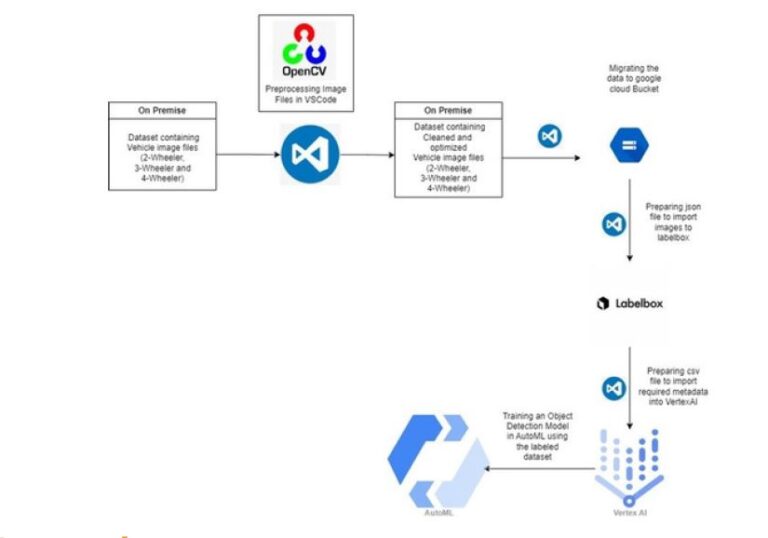- July 27, 2023
Enabling Autonomous Driving Systems with Advanced Vehicle Detection

Introduction
Autonomous driving systems rely heavily on robust and efficient vehicle detection models to navigate and interact with the surrounding environment. This case study focuses on the development of a state-of-the-art vehicle detection model tailored for self-driving systems, enabling them to perceive and respond to other vehicles on the road accurately.
Problem Statement
The primary objective of this project was to develop a highly accurate and real-time vehicle detection system capable of identifying and tracking vehicles in diverse driving conditions. The model needed to detect and localize vehicles with precision,even in challenging scenarios such as occlusions, varying lighting conditions, andcomplex traffic environments.

Methodology
Data Collection:
A comprehensive dataset consisting of thousands of annotated images and videos capturing various driving scenarios was collected. The dataset encompassed different weather conditions, road types, lighting conditions, and vehicle types to ensure a representative training set.
Preprocessing:
The collected dataset underwent preprocessing steps to standardize image resolutions, remove noise, and augment the dataset for improved model generalization.
Model Development:
Deep learning techniques, particularly convolutional neural networks (CNNs), were employed to develop the vehicle detection model.
Training and Validation:
The model was trained using a combination of training and validation data, with an iterative process of fine-tuning the model’s parameters and optimizing its performance.
Model Evaluation:
The trained vehicle detection model was extensively evaluated using a separate test dataset, measuring key metrics such as accuracy, precision, recall, and Intersection over Union (IoU).
Results & Benefits
- Enhanced safety
- Efficient traffic flow
- Improved perception and trajectory planning
- Scalability and adaptability
Architecture: Vehicle Detection Model

Our Approach
- Consolidating a dataset consisting of thousands of unlabeled images capturing various driving scenarios of different types of vehicles was collected in an on-premise server.
- Pre-processing the collected dataset to standardize image resolutions, remove noise, and augment the dataset for improved model generalization.
- Creation of a Google Cloud Storage Bucket to store the processed dataset of image files.
- As a next step, Labelbox was utilized to label the data. The annotated images, along with their corresponding labels, were saved in the NDJson file.
- Leveraged Google Cloud’s Vertex AI platform for training object detection models, particularly AutoML Vision.
- The AutoML object detection model was trained on the annotated dataset, enabling the model to learn discriminative features and spatial relationships for accurate vehicle detection.
- The trained vehicle detection model was extensively evaluated using a separate test dataset, measuring key metrics such as accuracy, precision, and recall.